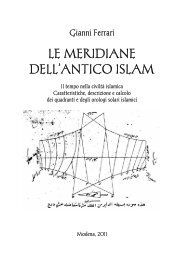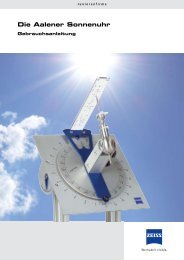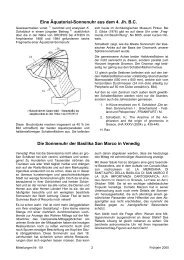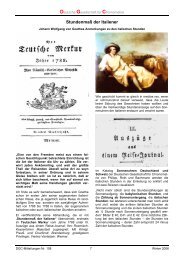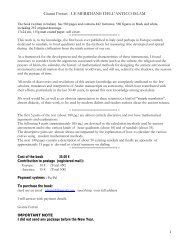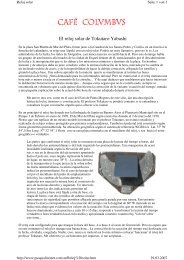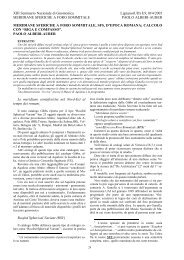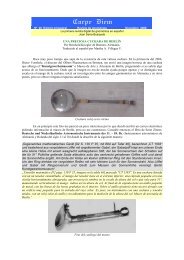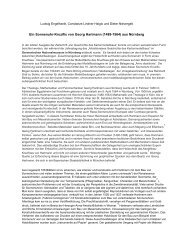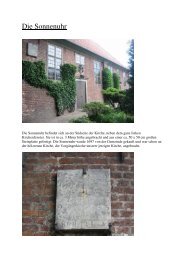International Gnomonic Bulletin - Gnomonica by Nicola Severino
International Gnomonic Bulletin - Gnomonica by Nicola Severino
International Gnomonic Bulletin - Gnomonica by Nicola Severino
You also want an ePaper? Increase the reach of your titles
YUMPU automatically turns print PDFs into web optimized ePapers that Google loves.
The dates and times of the summer solstice:<br />
The exact date varies from year to year and may occur between the 20th and 23rd of<br />
June.<br />
Year Summer solstice (UT)<br />
1999 JUN-21 @ 19:49<br />
2000 JUN-21 @ 01:47<br />
2001 JUN-21 @ 07:37<br />
2002 JUN-21 @ 13:24<br />
2003 JUN-21 @ 19:10<br />
2004 JUN-21 @ 00:56<br />
The above dates and times were provided the astronomical calculations on The Dome of<br />
the Sky web site. 9 Times are in UT (Universal Time). This used to be called Greenwich<br />
Mean Time or GMT. In North America, you can find your local time <strong>by</strong> subtracting:<br />
2 hours 30 minutes for Newfoundland daylight savings time<br />
3 hours for ADT<br />
4 hours for EDT<br />
5 hours for CDT<br />
6 hours for MDT<br />
7 hours for PDT<br />
8 hours in AKDT (Alaska)<br />
9 hours in ADT (Aleutian Islands)<br />
10 hours in HST (Hawaii) 10<br />
The ancients did not have access to modern mathematical algorithms to calculate the<br />
date and time of the solstice. To the unaided eye, the sun would seem to set/rise at the<br />
same location on the horizon for about five days before and after the actual solstice.<br />
Ancient people would record the days when the sun rise or set was noticeably different<br />
from the extreme position, and interpolate the probable day of the solstice. They then<br />
used a variety of techniques to display future solstices:<br />
A carved or painted symbol, or some other marker, would be located at the end of a<br />
long passage that was exposed to sunrise or sunset on the solstice. It would be<br />
illuminated <strong>by</strong> the rising or setting of the sun on the day of the solstice. Alternately, a<br />
hole in the roof of a structure would allow the noonday sun to shine onto a marker set<br />
into the floor.<br />
In temperate zones, the shadow of an upright pillar would be observed at noontime at<br />
the summer solstice. The shadow would be shortest on that day.<br />
The point on the horizon where the sun set and rose would be observed from a fixed<br />
location. A remote marker would indicate where the sun rose or set on the solstice. 3



